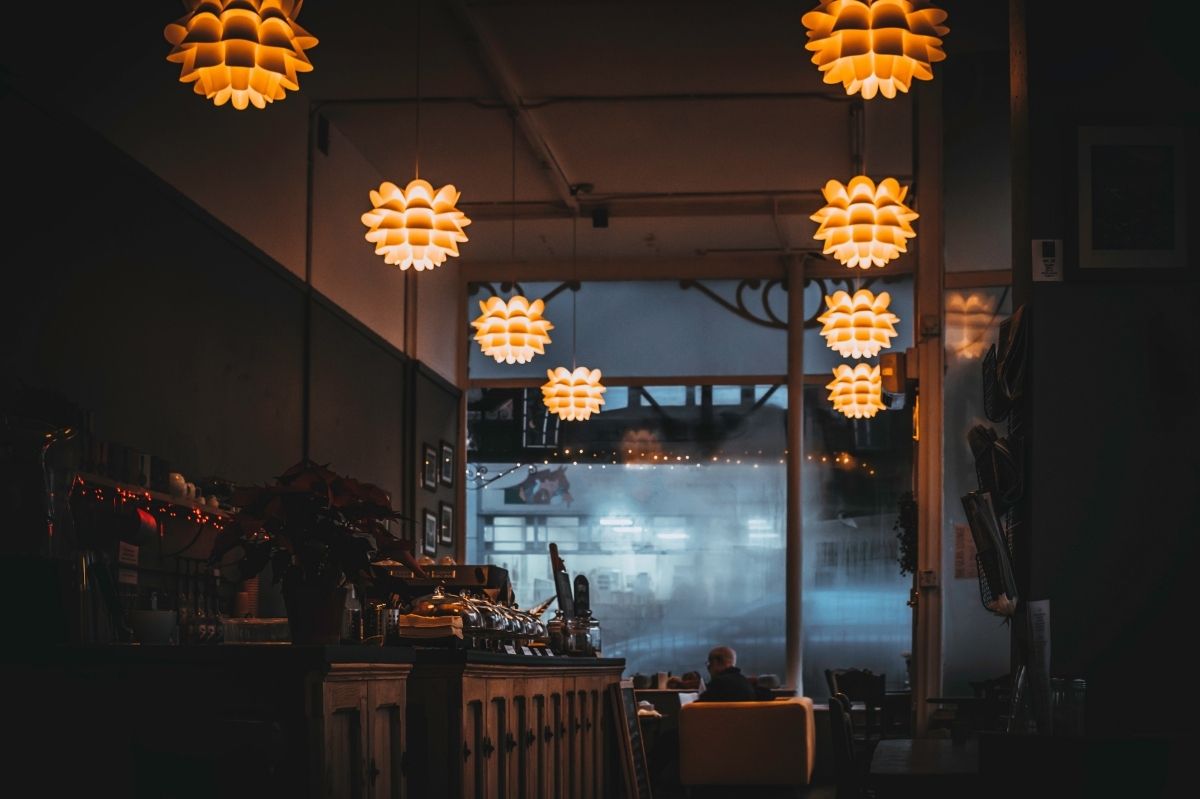Hybrid Gastronomy | Ghost Restaurants And Virtual Brands

Restaurants : At the end of 2020, 85.5 thousand eateries were operating in Poland. Although 4,400 apartments disappeared from the Polish market during the pandemic, another 6,600 started their operations simultaneously. Despite this, the mood in the industry at the beginning of the year was not happy, and as many as 50% of companies were in a situation that threatened their stability.
The frostbite of the economy was a great relief for many companies operating in the HoReCa industry. However, in the case of gastronomy, there is no return to the “old normality,” as evidenced by ghost kitchens emerging like mushrooms – kitchens serving several restaurant brands, fulfilling only take-out orders.
2020 was a record year in gastronomy in terms of the value of take-away meals. According to the estimates of the Stava company, at that time, Poles spent PLN 9.5 billion on food ordered over the phone or the Internet. The most popular place on the Polish Internet for ordering food with home delivery is the portal Delicious, owned by the Danish company JustEat Takeaway, which took up 40% of the market. In turn, Uber Eats handles 14% of orders, and Glovo – 8%. These numbers could probably be higher were it not because gastronomy treats these channels as a supplement to its offer and not the primary distribution method, because using them is associated with high fees for operators. However, after the pandemic outbreak, many catering companies had no choice but to use this distribution channel for some time.
Table of Contents
Restaurateurs are looking for alternatives to sales platforms.
High commissions, in some cases exceeding 30% of the contract value, including delivery costs, resulted in a series of complaints filed with UOKiK in spring 2020. Ultimately, the Office did not find any glaring flaws on sales platforms. On the other hand, ideas began to appear in the public space to define the maximum commission that purchasing aggregators could charge for brokerage in sales. Such solutions function, among others in New York, where brokers may charge a maximum of 20 percent of the contract value.
As operators’ commissions remained high, more and more eateries have decided to develop their ordering channels. Currently, it is 34% of the market value. This approach makes a lot of sense, especially if we want to build a stronger bond with regular customers and our discounts and promotion systems. The most important advantage of this solution is that the restaurateur does not have to share the profit with the operator of the sales platform.
Bottom index In 2020, Poles most willingly used the Delicious platform online and the websites of specific restaurants. Subscript end subscription 2020, Poles most willingly used the Delicious platform online and the websites of particular restaurants.
It is worth mentioning a study conducted by scientists from Universitat Oberta de Catalunya, who analyzed the business model of operators of take-away platforms operating in Barcelona. It turns out that for this type of activity to be profitable, the platform should handle at least 8,000 orders a day, and in the case of a globally operating service, this number should exceed 19,000.
Virtual restaurants are conquering the market.
Due to savings during the pandemic, some sellers gave up on-site customer service altogether. This, in turn, gave an impulse to launch the so-called ghost kitchen, i.e., restaurants that do not accept guests at all, and their kitchens only serve the purpose of preparing and serving a meal. This is an idea similar to those previously implemented, for example, by cosmetic stores or online bookstores, i.e., no stationery store, and all orders are carried out only by courier. Ghost kitchen is an exciting idea that not only minimizes costs, for example, allows you to give up the restaurant room and waiter service, but also allows you to use the available resources optimally. One ghost kitchen can serve several virtual restaurants, which increases the chance of receiving and fulfilling an order. For this reason, big players such as the Sphinx also invest in ghost kitchens. The chain currently has 93 restaurants operating only on the Internet.
After the government lifted some of the restrictions on, among other things, restaurant analytical company placeme. Analyzed traffic in 250 gastronomic locations all over Poland. It turns out that on May 15 this year, more of our compatriots decided to take advantage of the pleasure of eating out in the city than in the previous year, i.e., on May 23, on the first Saturday after the opening of gastronomy after the first wave of the pandemic. The traffic in eateries increased by as much as 38% compared to the same situation in the previous year. Interestingly, the following weekends in 2020 were much (almost twice) better for restaurateurs than the first “frostbitten” weekend in May 2021.
Lower index Last year’s economic frostbite had a much stronger effect than after the 3rd wave of the pandemic. Subscript list year’s economic frostbite had a much more substantial impact than after the 3rd wave of the pandemic.
Customers got used to convenient solutions.
These data may be surprising if we consider the long duration of the restrictions, which – as it might seem – should increase Poles’ appetite for meeting friends in restaurants and other public places. There are many indications that the pandemic has permanently changed the behavior of consumers who have become convinced of the convenience of ordering meals via a mobile application or website. This, in turn, suggests that the idea of a ghost kitchen may turn out to be an interesting alternative to traditional or hybrid restaurants – offering meals on the spot.
The future is hybrid.
People who hoped that vaccination against the coronavirus and frostbite would revive pre-pandemic consumer habits might feel disappointed. The pandemic only accelerated the inevitable digital transformation. This does not mean, of course, that we will not eat out with friends and business partners from time to time (after all, we have waited a long time for this). However, there is no indication that we will give up the convenience of ordering meals with a few clicks in the mobile application or via the website. As is the case with remote work, the future also in gastronomy turns out to be hybrid.
Also Read : Change Offices During Covid-19 | 5 Things To Consider
